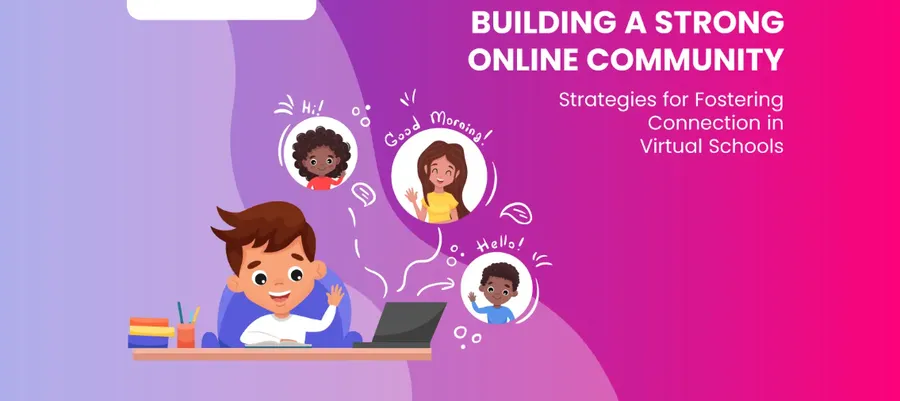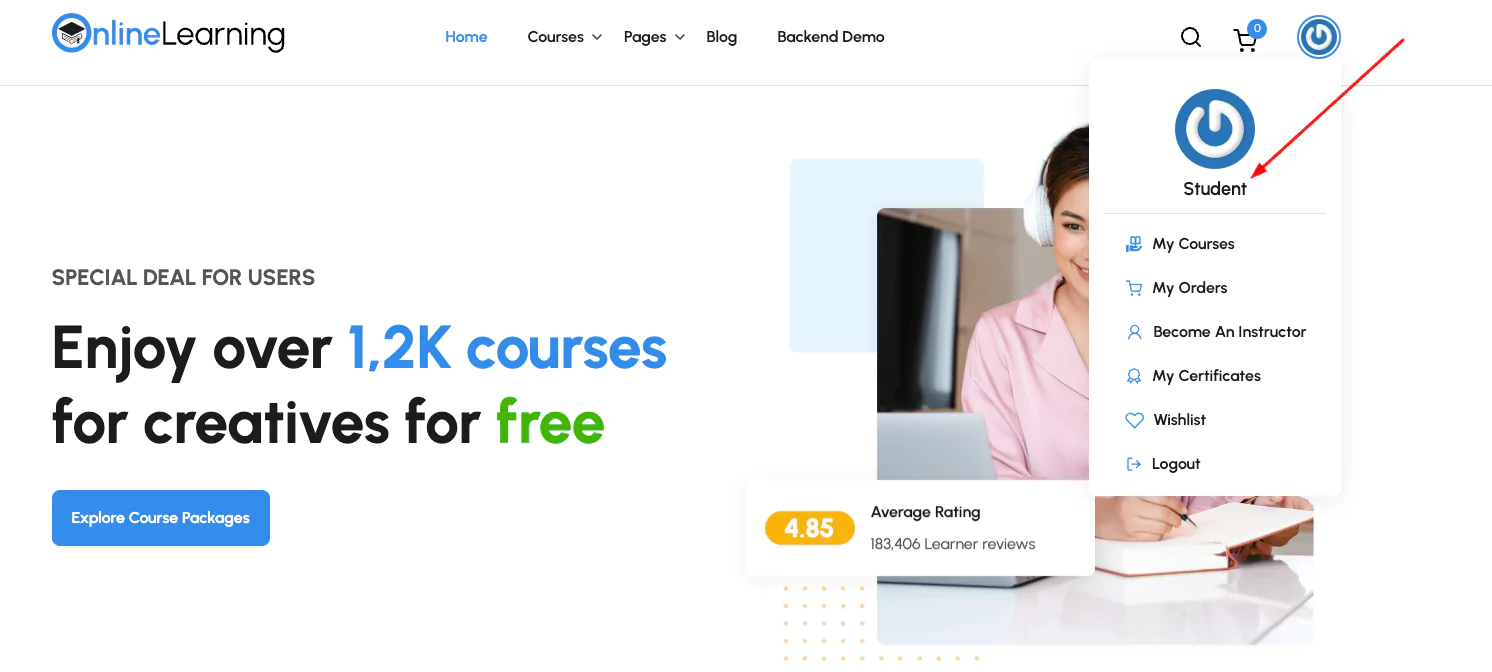Online learning offers incredible flexibility and access to education, but it can sometimes lack the sense of connection in traditional classrooms.
That’s why building a community through online courses makes a difference. By fostering a sense of belonging and encouraging interaction, these communities can significantly enhance the online learning experience.
This blog post explores the importance of building community in online courses and provides effective strategies to achieve this.
We’ll delve into how a strong online community benefits both students and instructors, leading to increased motivation, engagement, and ultimately, improved learning outcomes.
We’ll discuss practical techniques for creating a welcoming and inclusive environment, facilitating active learning and collaboration, and leveraging technology to enhance interaction.
Now, let’s get started!
Eduma – Education WordPress Theme
We provide an amazing WordPress theme with fast and responsive designs. Let’s find out!
What is an Online Learning Community?

An online learning community is a group of students who are connected by their shared learning goals and interact with each other in a virtual environment.
This interaction can take many forms, such as:
- Discussion forums: Where students can share ideas, ask questions, and engage in debates.
- Live Q&A sessions: Providing real-time interaction with instructors and peers.
- Group projects: Encouraging collaboration and teamwork.
- Peer feedback: Allowing students to learn from each other.
- Social media groups: Extending the community beyond the online course platform.
Why is Building Community in Online Courses Important?

Creating a sense of building community in online courses offers numerous benefits for both students and instructors:
Benefits for Students:
- Increased motivation and engagement: Feeling connected to a community can motivate students to actively participate and stay committed to their learning journey.
- Improved learning outcomes: Collaboration and peer learning can deepen understanding and enhance knowledge retention.
- Reduced feelings of isolation: A strong community combats the isolation often associated with online learning, providing a sense of belonging and support.
- Enhanced communication and collaboration skills: Interacting with peers in a virtual environment helps develop essential communication and teamwork skills.
- Increased confidence and self-esteem: Receiving support and encouragement from peers can boost students’ confidence and belief in their abilities.
Benefits for Instructors:
- Improved course satisfaction: Students who feel part of a community are more likely to be satisfied with their online learning experience.
- Reduced workload: A supportive community can encourage peer-to-peer learning, reducing the need for individual instructor support.
- Increased student retention: Students who feel connected to their peers are more likely to complete the course.
- Valuable feedback: Community interaction can provide instructors with valuable insights into student needs and preferences.
How to Build Community in Online Courses: Best Strategies
Here are some effective strategies for building community in online courses:

1. Create a Welcoming and Inclusive Environment
First impressions matter, especially in the online world.
It’s essential to establish a welcoming and inclusive environment from the very beginning.
This encourages students to feel comfortable and valued, setting the stage for active participation and meaningful interactions.
- Begin with Introductions: Start your course with an icebreaker activity. Encourage students to share information about themselves, their backgrounds, their interests, and their reasons for taking the course. This helps students connect and discover common ground.
- Establish Clear Communication Guidelines: Outline expectations for respectful and constructive interactions. Emphasize the importance of active listening, empathy, and appreciating diverse perspectives. Create a safe space where students feel comfortable expressing themselves without fear of judgment or negativity.
- Use Inclusive Language: Be mindful of the language you use in your course materials and communications. Avoid any language that could be perceived as biased, discriminatory, or exclusive. Ensure all students feel respected and valued, regardless of their background or identity.
- Provide Multiple Ways to Participate: Recognize that students have different learning styles and preferences. Some students may be more comfortable participating in written discussions, while others may prefer live interactions or group projects. Offer a variety of engagement methods to cater to these diverse needs.
2. Facilitate Active Learning and Collaboration
Passive learning, where students simply absorb information without actively engaging with it, can lead to disengagement and lower retention rates.
To foster a sense of community and deepen learning, it’s crucial to encourage active participation and collaboration among students.
- Encourage Peer-to-Peer Learning: Design activities that require students to interact with each other. This could include group discussions, peer feedback sessions, or collaborative projects. Peer-to-peer learning allows students to learn from each other’s perspectives, build valuable skills, and develop a sense of shared responsibility.
- Utilize Breakout Rooms: If you’re hosting live sessions, utilize breakout rooms. These virtual spaces allow you to divide students into smaller groups for focused discussions or activities. This encourages active participation from all students and allows for deeper engagement with the material.
- Create a Buddy System: Consider pairing students up as “buddies” or “learning partners.” This provides students with a dedicated point of contact for support and encouragement throughout the course. It fosters a sense of camaraderie and helps students feel more connected to the learning community.
3. Leverage Technology to Enhance Interaction
Technology plays a vital role in online learning, and it can be a powerful tool for building community.
Utilize the features of your learning management system (LMS) and other online tools to create opportunities for interaction and collaboration.
- Utilize Online Forums Effectively: Create dedicated forums for different topics, discussions, or activities. Actively participate in these forums, responding to student posts, asking questions, and guiding discussions. This demonstrates your engagement and encourages students to participate more actively.
- Incorporate Interactive Tools: Use interactive tools like polls, quizzes, and interactive whiteboards to make learning more engaging and encourage participation. These tools can be used to assess understanding, gather feedback, and stimulate discussions.
- Host Live Q&A Sessions: Schedule regular live Q&A sessions where students can ask questions and receive real-time feedback. This provides a valuable opportunity for interaction and helps to build rapport between you and your students.
4. Provide Personalized Support and Feedback
In an online environment, it’s easy for students to feel disconnected or lost. Providing personalized support and feedback helps to bridge this gap and foster a sense of connection.
When students feel supported and valued, they are more likely to engage with the course material and participate in the learning community.
- Offer Regular Feedback: Provide timely and constructive feedback on assignments, discussions, and other activities. This shows students that you are invested in their progress and helps them to improve their understanding.
- Be Available and Responsive: Respond to student questions and concerns promptly. This creates a sense of accessibility and demonstrates your commitment to supporting their learning journey.
- Choose an LMS with Strong Community Features: Select a learning management system (LMS) that offers features specifically designed to support community building. This could include discussion forums, chat functionality, group tools, and easy ways to share announcements and updates.
5. Encourage a Growth Mindset
Cultivating a growth mindset is essential for creating a positive and supportive learning community.
A growth mindset encourages students to embrace challenges, view mistakes as learning opportunities, and believe in their ability to improve.
- Celebrate Successes: Acknowledge and celebrate student achievements, both big and small. This fosters a sense of accomplishment and motivates students to continue striving for improvement.
- Promote a Culture of Learning from Mistakes: Encourage students to see mistakes as an integral part of the learning process. Create a safe environment where students feel comfortable taking risks and learning from their errors.
- Provide Resources for Continuous Learning: Share relevant articles, videos, and other resources to support ongoing learning and development. This encourages students to continue their learning journey beyond the confines of the course.
Using LearnPress to Build Communities in Online Courses
When it comes to building a successful e-learning environment, the combination of LearnPress with integrations such as BuddyPress, bbPress, the Live Course Addon, and the Announcement Addon provides amazing features.
First, with the LearnPress – bbPress Integration, create a Platform for Discussions around Courses. Modular or topical course-based forums allow learners to seek clarification, contribute ideas and discuss issues.
Next, The BuddyPress Integration allows students to socialize through profiles and private messaging as well as joining groups based on the courses they are undertaking.
We can use the Live Course Add-on to ensure that students participate in a question and answer session, study groups, or discussions making learning online ever more interesting.
Further, incorporate forums or group chats for further interactions so that no student is left out. make use of the Announcement Add-on to periodically send out relevant allocation through updates, reminders, or even inspirational quotes to the students.
Senegence collaboration, Recognition of accomplishments can also increase levels of engagement. LearnPress and BuddyPress for instance allow such celebratory activities through badges, activity streams, or group postings, which help in the reinforcement of the feeling of inclusiveness.

Finally, such ways, in which LearnPress and its integrations provide support, allow to create a course with a lively learning community active through the course duration.
Bonus Tip: Gamify the Learning Experience
Incorporating elements of gamification can significantly boost engagement and motivation in online courses.
Gamification involves applying game-like elements, such as points, badges, leaderboards, and challenges, to non-game contexts.
This can make learning more fun and encourage students to actively participate in the community.
Final Thoughts
Hopefully, you can create a vibrant and supportive online learning community where students feel connected, engaged, and motivated to succeed. Of course, building a strong community takes time and effort, but the rewards are well worth it.
A thriving online community can transform the learning experience, fostering deeper understanding, increased engagement, and a sense of belonging that extends beyond the virtual classroom.
Read More: 8+ Strategies for Collaborating with Instructors in Online Courses
Contact US | ThimPress:
Website: https://thimpress.com/
Fanpage: https://www.facebook.com/ThimPress
YouTube: https://www.youtube.com/c/ThimPressDesign
Twitter (X): https://twitter.com/thimpress